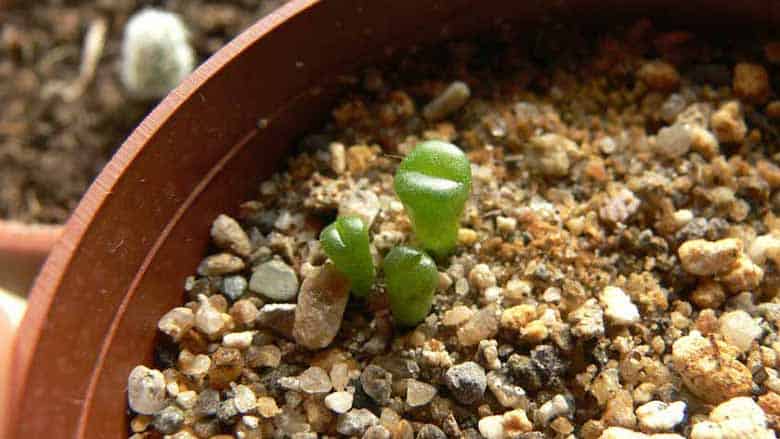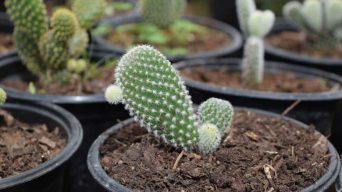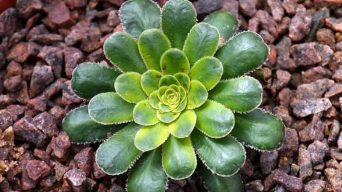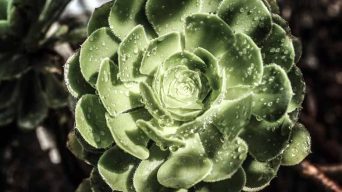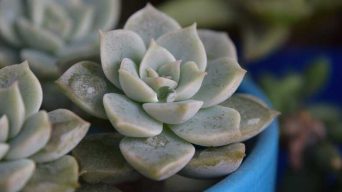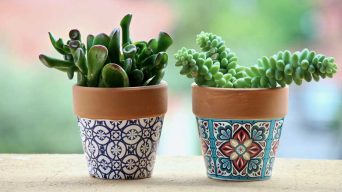Using regular potting soil for succulents and cacti is not ideal. Unlike the dense nature of regular potting mix, these plants thrive in well-draining, airy soil. Succulent-specific or cactus potting soil with ingredients like peat moss, perlite, and coarse sand ensures proper drainage, preventing issues like root rot. Regular soil retains too much water, making it unsuitable for the arid conditions these plants prefer. Opt for a specialized mix to support the health and growth of your succulents and cacti.
Selecting the correct potting soil is crucial for the successful growth of succulents.
To ensure thriving conditions, it’s essential to choose the right type of mix for your succulent or cactus, one that offers excellent drainage and aeration.
The quality of the potting mix significantly influences the success of growing succulents.
But one common question many people have is whether or not they should use regular potting soil for succulent plants and cacti.
Succulents and cacti require a particular type of soil to grow.
They need an airy soil with a good drainage system so they don’t rot and turn black, which can happen when the potting soil is too moist or doesn’t allow enough airflow.
Regular potting mix does not meet these needs because it tends to be heavy and dense, which causes the roots to suffocate over time.
Here, you will find the differences between regular potting soil and succulent potting soil and how to prepare the best soil mixture for these plants.
Soil Requirements for Succulents and Cacti
The soil that succulents and cacti need needs to be light, airy with good drainage, and doesn’t retain water excessively or not enough, so they never dry out completely.
The best soil type for these plants would probably be a succulent planting medium or cactus potting soil. Both have excellent properties for easy drainage without being too coarse.
A succulent planting medium holds more water than a typical potting mix, allowing air to circulate, which helps roots thrive.
The mixture typically consists of 50% peat moss, 25% perlite, and 25% coarse sand or pumice.
These ingredients are occasionally mixed with composted manure, but not always because some people like their plants on the cleaner side.
Cactus potting mixes also have excellent properties for easy drainage without being too coarse. They can be made from something as simple as loose-fitting particles (like gravel) combined with a bit of composted manure or fertilizer if desired.
Differences Between Regular Potting Soil and Succulent Potting Soil
The most crucial difference between regular potting soil and succulent potting soil is the amount of water that it absorbs.
Succulents and cacti are best suited to dry conditions. It would be best if you planted them in a soil mix with a porous material made from rocks or pebbles, which helps them retain moisture.
This type of medium also allows for good air circulation around roots, preventing rot.
Regular potting mix and an orchid soil mix retain more water than succulent potting soil.
But hardy succulents need less frequent watering. They have smaller root systems that don’t store as much water and make regular potting soil too wet for their needs.
Likewise, regular potting soil does not offer enough drainage. Still, a succulent potting soil has plenty of holes for excess water to escape.
Regular potting soil is more suitable for plants like African violets, orchids, and begonias, which need regular watering.
Differences Between Succulents and Cacti Soil Needs
If you are wondering whether or not to use regular potting soil for succulents and cacti. In that case, it is important to know the difference between succulent soil mix and cactus soil mix.
Cacti need a sandy soil mix that retains less water, has good drainage, and needs more potassium.
Succulents are happiest with a nice potting medium that does not retain too much moisture because they don’t store as much water in their root systems.
Regular potting soil is unsuitable for succulent plants due to the increased watering frequency required by regular potting soil mix. It also makes them susceptible to rot from staying wet all the time.
Regular potting soil might be better suited for other types of plants that prefer a soil that retains more water than succulents do (like African violets).
The best cactus soil mix for your cactus plant would be a well-draining sandy loam. It will also have a higher organic matter than the average succulent preference.
Cacti also need more fertilizer for their root system to develop properly. They will also need periodic watering from an overhead source like showers or sprinklers rather than just relying on rainfall (which means less water loss).
For succulents, the best potting soil mix will be different. It will have more organic material and less fertilizer.
Also, the succulent soil should be allowed to dry out between watering to prevent rot or otherwise damage their roots.
Essential Considerations for Succulent Soil
Choosing the right soil for succulents and cacti is vital for their health and optimal growth. These plants have distinct requirements that set them apart from typical houseplants, and the soil plays a crucial role in supporting their resilience to arid conditions. Here are key factors to consider when selecting or preparing soil for succulents and cacti:
- Well-Draining Composition: Succulents and cacti, originating from regions with low rainfall and well-draining soil necessitate excellent drainage. An ideal succulent soil should facilitate quick water passage, preventing root rot caused by excess moisture. Materials like perlite, coarse sand, or pumice enhance drainage and aeration.
- Aeration and Porosity: Succulent roots need oxygen access, making a well-aerated soil mix crucial for overall health. Incorporating materials that promote porosity, such as perlite or small volcanic rocks, creates air pockets, facilitating oxygen exchange and preventing compaction.
- Minimal Organic Matter: Unlike traditional potting soils, succulent mixes should have minimal organic matter to avoid moisture retention and the risk of root rot. A blend with a lower percentage of peat moss or coconut coir and a higher proportion of mineral components mimics arid environmental conditions.
- Nutrient Content: Succulents don’t require overly rich soils. They prefer a lean soil mix with minimal organic matter. Excess nutrients can lead to issues like leggy growth and susceptibility to pests. Consider a specialized succulent or cactus mix, or prepare a DIY mix with a balanced ratio of minerals suitable for these plants.
- pH Balance: Succulents generally thrive in a slightly acidic to neutral pH range. Testing and adjusting the soil’s pH contribute to overall plant well-being. Many succulents prefer a pH range between 6.0 and 7.0, emphasizing the importance of selecting or amending the soil accordingly.
- Container Considerations: The choice of container significantly influences soil effectiveness. Terracotta pots, being porous, absorb excess moisture, preventing waterlogged conditions. Containers with drainage holes are essential to allow excess water to escape, providing an additional layer of protection against root rot.
How To Prepare Succulent and Cactus Potting Soils
Several types of potting soil are recommended for succulents and cacti, and each one has different ratios of ingredients.
To decide which is best, it is important to know what type of succulents or cacti you are growing and their specific needs.
The most common types recommended by experts are:
- Regular potting soil with some extra sand added in (for good drainage).
- A mix containing coir fiber because it has excellent water retention.
- A mixture primarily composed of perlite for its airy consistency.
The mixture of the different types of soil are:
Crafting a Succulent Soil Mix
When creating the ideal succulent soil mix, it’s crucial to maintain the right proportions. The recommended ratio is 50% potting soil, 25% sand, and 25% coir fiber, each playing a vital part in providing the necessary conditions for optimal plant growth.
This well-balanced combination ensures high drainage, meeting the specific needs of cacti and other succulent species.
Creating a Cactus Plant Mix
The radio is 50% potting soil, 25% coarse sand, and 25% perlite for a cactus mix containing perlite as the primary ingredient. This mix works well with plants like aloe vera and jade because they can withstand drier conditions; there are different ratios for seedlings or mature plants, though.
Formulating an All-Purpose Cactus and Succulent Soil Mix
The ratio is 40% perlite or vermiculite and 60% regular potting soil with some added sand for good drainage. This potting soil mix is usually just for cacti and succulents but can also work well with other plants.
In addition to these ratios, it is important to consider if you have time for your plants or whether they are in full sun exposure and cultivating succulent plants indoors.
These factors will determine how often you water them and what type of succulent soil/cacti soil would work best for your needs.
Common Issues with Succulent Soil
Choosing the right soil for succulents and cacti is vital for their well-being. Although regular potting soil can serve the purpose, it may give rise to common issues. Understanding these challenges is essential for successful succulent cultivation.
Compacted Soil
A prevalent issue with using regular potting soil for succulents and cacti is soil compaction. To address this concern, consider choosing a well-draining mix and selecting an appropriate-sized pot for your plants.
The organic matter in the regular potting soil tends to become dense and compact over time. This compaction limits air and water movement through the soil, resulting in poor drainage.
Adapted to arid environments, succulents thrive in well-draining soil, and compacted soil can lead to root rot and other moisture-related problems. To address this, consider enhancing the potting soil with perlite, coarse sand, or pumice. These amendments improve aeration and drainage, preventing soil compaction and fostering a healthier root system.
Choosing the right-sized pot is equally crucial, as a pot that is too small can exacerbate soil compaction issues. Ensure your pot allows ample space for the plant’s roots to spread and grow, promoting overall plant health.
Nutrient-Rich Soil
Regular potting soil, formulated to provide nutrients for various plants, may contain more organic matter and nutrients than succulents and cacti require.
Adapted to nutrient-poor soils, these succulent plants can struggle in overly rich environments. Excessive nutrients can result in issues like leggy growth, overly lush foliage, and increased vulnerability to pests and diseases.
To address nutrient-related concerns and promote optimal plant growth, consider blending regular potting soil with a gritty substance such as sand or perlite. This mixture helps regulate the nutrient content, creating an environment that supports healthy plant development.
Carefully adjusting the ingredients in your potting mix ensures an ideal balance for your plants’ nutritional needs.
Alternatively, use a specialized succulent or cactus mix tailored to their unique needs for optimal growth.
pH Imbalance
Succulents and cacti generally prefer slightly acidic to neutral soil pH levels.
Regular potting soil, designed for a broader range of plants, may have a pH that is too high for these arid-adapted species. An imbalanced pH can impede nutrient uptake and affect overall plant health.
To address pH issues, test the soil with a pH meter and adjust as necessary. Incorporating materials like pine bark or coconut coir can lower the pH if it is too high, while limestone or crushed eggshells can raise it if it is too low.
Final Thoughts
When cultivating potted succulents and cacti, it’s essential to incorporate a porous material like rocks or pebbles into their soil mix to retain moisture and provide an optimal environment for plant growth.
This potting mix is called an open medium because it allows for good air circulation around roots, preventing rot.
Regular potting soil mix retains more water than succulent mix. Therefore, regular potting soil would be too wet for succulents and cactus plants.
Likewise, regular potting soil does not offer enough soil drainage.
Succulents need a soil different from what’s typically used in pots.
A soilless mixture of ingredients mixed with pot holes allows excess water to drain from the soil and helps maintain a proper succulent’s moisture level without causing any root damage.
So, can you use regular potting soil for succulents and cacti? You can use it, but use a better option for the sake of your succulents and cacti.

